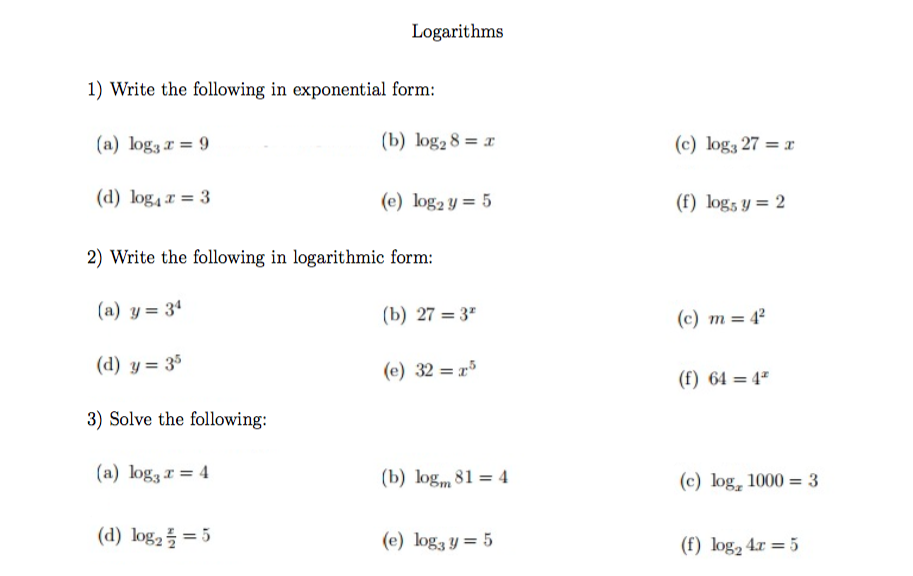

You can also use the same idea to convert exponential form to logarithmic by doing the reverse of what we explored in this article. Lastly, remove the word "log" from the equation and you'll have successfully converted the equation! ) We rst use the coefcient formulas Eq.(10.2. solution).DSP is not limited by either of.
#EXPONENTIAL FORM SERIES#
1: Fourier Series Examples Here, the H(w) ful lls the role of the A ns in equations (1) and (2) it gives an indicator of how much' a par-ticular frequency oscillation contributes to the function. The base doesn't change sides, but the other numbers (the exponent and the "number") do. The imaginary exponential form of the Fourier Transform is de ned as follows: H() Z 1 1.

To recap: In order to change a logarithmic form function to an exponential one, first find the base, which is the little number next to the word "log". Question: Convert l o g 2 8 = 3 lo = N b E = N format, you can find the exponential form of log. How do we convert log form to exponential form and vice versa? What's does converting log vs exponential form ultimately look like? Let's explore this through an example. But in this chapter, we're looking at something a little different. It is a shorthand way of writing repeated multiplication, and indicates that the base is a factor.
#EXPONENTIAL FORM HOW TO#
You probably recall how to change exponential form to radical form. Exponential notation is composed of a base and an exponent. The base is 3, and it is what is being multiplied.Ī logarithm of a number, on the other hand, is the exponent that a base has to be raised to make that number. The exponent is the little number 4, and it shows how many times the number is to be multiplied by itself. An example of an exponential form number would be that in order to show 3x3x3x3, we'd instead write 34. It is a shorter way to show that a number is repeatedly multiplied a number of times by itself. Exponentials happen when a number is raised to a certain power. We can also look for prime factors of 243 and multiply them together and then express them in the exponent.The log form and exponential form are actually inverses of each other. Therefore, the exponential form of 125 is 5 3 Exponential form of 243 Therefore, the exponential form of 625 is 5 4 Exponential form of 125ġ25 is when 5 multiplies itself three times In the case of 625, you can start with 5 as the divisor. finding the smallest prime number that can divide the number completely without leaving a reminder then multiply all the prime factors that are the divisors. The first thing to do is to use prime factorization i.e. This means 2 will multiply itself six times to give 64.

Like I have stated above that exponents simply refer to the number of times a particular number appears in a numerical term. This means if “a” is any number and “b = 0” then the answer is 1 (2 0 = 10 0 = a 0 = 9 0 = 1) Exponential form of 64 How to Write a Number in Exponential Formīefore I proceed to give some examples, there is an index law that states that any base number with the exponent of zero is 1. When a number is represented in this form, the exponent represents the number of times the base will multiply itself. The standard way of representing it is a b, where a is the base and b is the order. For example, 2 × 2 × 2 can be written as 2 3 in the exponential form, where 2 is the base and 3 is the power. The exponent can also be referred to as index or power. The exponential form is a way of writing repeated multiplications of the same number multiplication involving base and exponents.


 0 kommentar(er)
0 kommentar(er)
